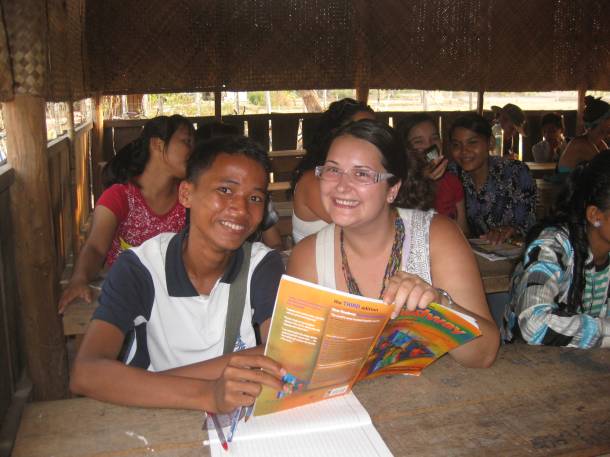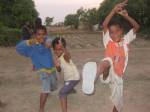Since I’ve been back from my short visit to Siem Reap, I’ve had many conversations about the state of children begging in Cambodia. I’ve heard many, many stories of people who bought things from street kids, who simply gave them money, or who bought them things thinking that was better than doing nothing.
I won’t criticize any of these people because the emotion involved in these actions was completely justified and understandable. However, that is what the people running these kids rely on. It’s much harder to say “no” to children, but unfortunately that’s exactly the emotion that these entrepreneurial street kids’ pimps count on.
I will say that a travel companion of mine fell into this trap, and it was not until halfway through the transaction that we all really realized what was happening.
A child of no more than 12 was carrying a baby and begging passersby to buy the baby milk. “I don’t want money, my baby sister needs milk.” And the baby really did look like it needed something with its head lolling to one side as it barely looked conscious. So my traveling companion said, “Yes, follow me into the store (conveniently right behind us) and I’ll buy some formula.”
As we were standing behind her at the check-out, another older woman followed by a dirty street kid had picked up the exact same can of formula, but immediately after she paid for the formula, she pulled back the fresh seal. “So they can’t sell it back to the store,” she said with a sad smile as the child accepting the formula cringed and tried to push it back so that it looked un-opened.
$11 for a can of formula is a lot more than the $1 most kids get by selling bracelets or begging.
(While three of us moved on, one of my friends stayed on in Siem Reap and basically spent the next week telling tourists not to buy formula from these street kids)
There is little worse than thinking that you’re helping a good cause than to realize that you’re just feeding the problem. Often street kids who are working in cities like Siem Reap or Phnom Penh are not working for themselves, but for older street “pimps,” who might be providing meager food and shelter in return for the kids walking the streets night after night and hunting for some naïve tourist to rip off. (This isn’t me being harsh; I’m counting myself in this large group of people.)
The worst part of this whole situation is that you really are just perpetuating their misfortune. If a child is making good money begging on the street, whether it’s because they are an orphan, or because their parents have no other choice but to send them away to make money for the family, it is very unlikely that they will be able to get out of this situation. Because of the amount of money that they can make on the street they will not be sent to school, they will not be able to make the most of themselves and escape the life of the streets, and they will undoubtedly be exposed to predators or drugs.
Unfortunately, as long as tourists give to these children who pull at their heart strings, the circle will continue endlessly.
There are multiple organizations that are working to stop this circle of abuse; those are the places worth donating and spending time.
Because this is such a heavy topic that I may or may have provided enough detail about, here are some extra reading links that I found useful, albeit depressing:
A good article on Travelfish about why giving money to street kids is a bad idea.
An in-depth article about how voluntourism can go wrong.
And here are some links to worthy organizations working to prevent this cycle of poverty:
The PonHeary Ly Foundation
The Green Gecko Project
These are just a couple, but if you were as touched as I was by the overt poverty in Cambodia, or are planning a trip there, do your own research and decide how you want your dollars put to use.












